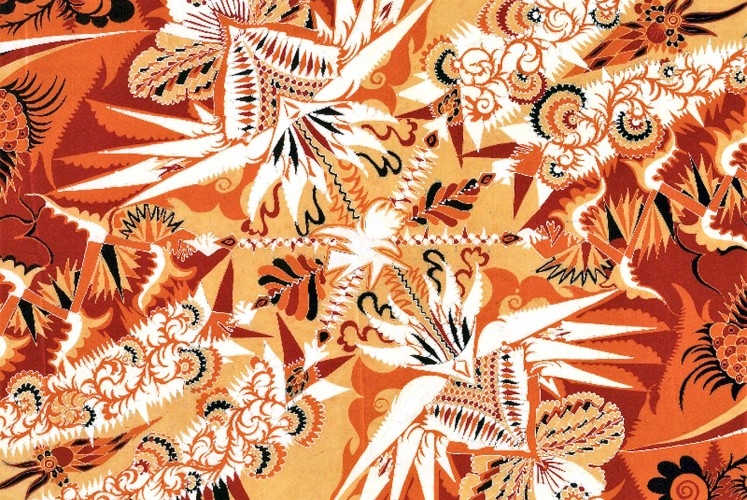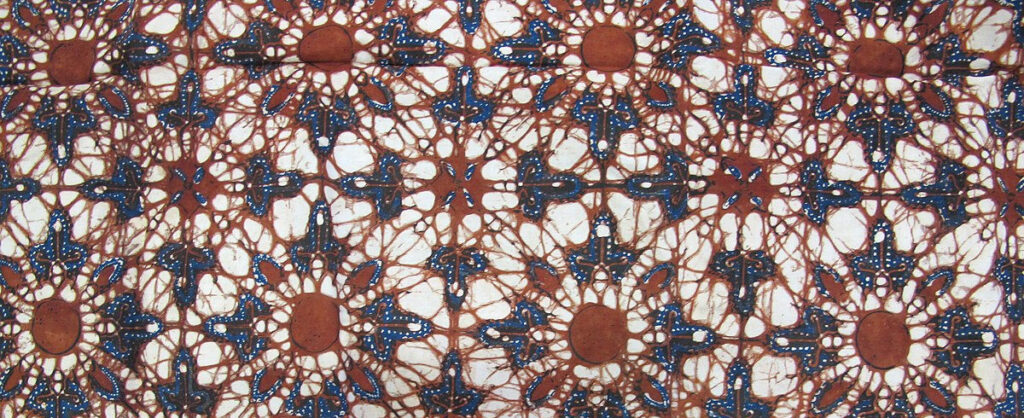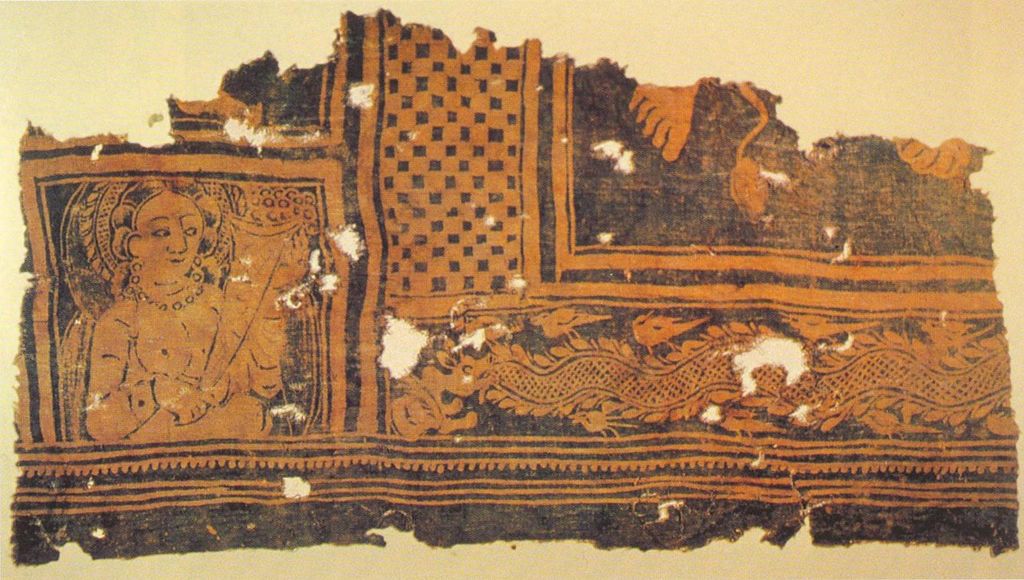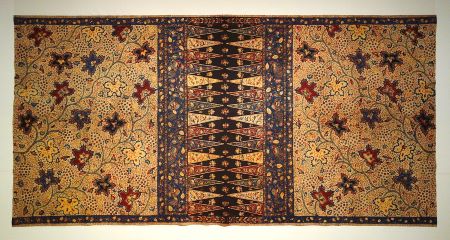Imagine yourself wandering through the vibrant streets of Thailand, surrounded by the rich cultural tapestry that this enchanting country has to offer. As you soak in the sights and sounds, your attention is inevitably drawn towards the evolution of ancient Batik textiles. These intricately designed fabrics possess a deep historical significance, reflecting the creativity and traditions of the Thai people. Delving into the depths of this tradition provides a captivating insight into the country’s heritage, allowing you to appreciate the skill and artistry passed down through generations. Join us on a journey as we explore the ancient Batik textile tradition in Thailand, unlocking the hidden stories woven within these splendid fabrics.
Overview of Batik Textiles
Batik textiles have a rich history and cultural significance in Thailand. They are renowned for their intricate designs and vibrant colors, making them a cherished art form and traditional craft. This article will provide an overview of batik textiles, exploring their historical background, importance in Thai culture, and the various regional variations and motifs. Additionally, we will discuss the role of batik in Thai society, its modern adaptations, preservation efforts, and the challenges and future prospects of this ancient textile tradition.
What are Batik Textiles?
Batik textiles are a type of fabric that is traditionally made using a wax-resist dyeing technique. This technique involves applying wax to specific parts of the fabric to create a design or pattern, which is then dyed. The wax acts as a barrier, preventing the dye from reaching the fabric and creating a color contrast between the dyed and undyed areas. This process can be repeated with multiple dye colors, resulting in intricate and multi-colored designs.
Historical Background
The history of batik in Thailand can be traced back to ancient times. Prehistoric textile patterns found in Thailand indicate that the art of fabric dyeing and printing has been practiced in the region for thousands of years. The influence of Indian and Chinese textile techniques on Thai batik can also be seen through historical artifacts and writings.
Importance of Batik in Thailand
Batik textiles have played a significant role in Thai culture and are deeply ingrained in the country’s identity. They are not only valued for their artistic and aesthetic appeal but also hold religious and ceremonial importance. Additionally, batik has been an important economic driver, providing livelihoods to countless artisans and contributing to the local economy.
Early Origins of Batik
Prehistoric Textile Patterns in Thailand
The origins of batik in Thailand can be traced back to prehistoric times. Archaeological findings reveal the existence of intricately patterned textiles, suggesting that the art of fabric dyeing was practiced by ancient Thai civilizations. These early patterns featured motifs inspired by nature, such as plants, animals, and geometric shapes.
Influence of Indian and Chinese Textile Techniques
The influence of Indian and Chinese textiles can be seen in the development of batik in Thailand. Indian textile techniques, such as block printing and tie-dye, introduced new possibilities for pattern design and dye application. Chinese textiles, known for their intricate embroidery and silk weaving, also influenced Thai batik, inspiring more detailed and elaborate designs.
Traces of Batik in Ancient Thailand
While the exact origins of batik in Thailand are unclear, evidence of its presence can be found in ancient Thai artifacts. Excavations have unearthed fragments of dyed and patterned fabrics, indicating the existence of a vibrant textile tradition. These ancient textiles provide valuable insights into the techniques and motifs used in early Thai batik.
Development of Batik Technique
Materials and Tools
Traditionally, batik textiles in Thailand were made using natural materials and tools. The fabric was typically made from cotton or silk, which provided a smooth surface for the wax and dyes. The wax used for the resist process was derived from beeswax or a mixture of beeswax and resin. Tools such as tjanting (a small metal wax pen) and brushes were used to apply the wax onto the fabric.
Traditional Dyeing Methods
Thai batik artisans employ various traditional dyeing methods to create their vibrant designs. These methods include immersion dyeing, in which the fabric is submerged in a dye bath, and painting with dyes using brushes or stamping blocks. The choice of dye colors and application techniques depends on the desired effect and the artistic vision of the artisan.
Wax-Resist Techniques
The wax-resist technique is a trademark of batik textiles. In Thai batik, the fabric is first stretched onto a frame, and then the design is carefully drawn onto the fabric using the heated tjanting or brush dipped in wax. After the wax dries, the fabric is immersed in a dye bath. The areas covered in wax resist the dye, while the uncovered areas absorb the color. The wax is then removed, revealing the intricate design.
Pattern Design and Symbolism
Thai batik designs are emblematic of the country’s rich cultural heritage. They often feature intricate patterns inspired by nature, such as flowers, leaves, and animals. These motifs hold deep cultural symbolism and represent elements of Thai beliefs and traditions. Additionally, geometric and abstract patterns are also commonly used, reflecting the artisans’ creativity and individual style.
Regional Variations in Thai Batik
Northern Thailand Batik
Northern Thailand is known for its distinct style of batik, characterized by its bold and geometric patterns. The designs often feature intricate geometric shapes and repetitive motifs, creating a visually striking effect. The colors used are typically earthy tones, reflecting the natural beauty of the region.
Northeastern Thailand Batik
Northeastern Thailand, also known as Isan, has its own unique style of batik. The designs are characterized by vibrant colors and intricate motifs, often depicting scenes from everyday life and local folklore. The batik from this region is renowned for its detailed craftsmanship and use of bold colors.
Central Thailand Batik
Central Thailand, including Bangkok, has been an influential center for batik production. The batik textiles from this region often feature elaborate patterns and vibrant colors. The designs draw inspiration from both traditional Thai motifs and the eclectic influences of the cosmopolitan capital.
Southern Thailand Batik
The batik textiles from southern Thailand are known for their intricate and delicate designs. This region is renowned for its coastal beauty, and the batik patterns reflect this, often featuring motifs inspired by marine life, such as seashells, fish, and corals. The colors used are typically vibrant and reminiscent of the azure waters and tropical landscapes of the region.

Traditional Batik Motifs and Patterns
Flora and Fauna Inspired Patterns
Nature has always been a source of inspiration for batik artisans in Thailand. Flora and fauna inspired motifs are commonly seen in Thai batik, with flowers, leaves, birds, and butterflies frequently featured in the designs. These motifs symbolize fertility, beauty, and the connection between humans and the natural world.
Religious and Spiritual Motifs
Religion plays a significant role in Thai culture, and this is reflected in the motifs and patterns of batik textiles. Traditional batik designs often incorporate religious symbols, such as lotus flowers, elephants, and Buddhist deities. These motifs hold deep spiritual significance and are believed to bring good fortune and blessings.
National Symbols and Cultural Motifs
Thai batik textiles also feature national symbols and cultural motifs that represent the country’s identity and heritage. The Thai national flower, the orchid, is often depicted in batik designs, symbolizing beauty and grace. Other cultural motifs, such as traditional Thai architecture or the iconic tuk-tuks, can also be found in batik patterns.
Geometric and Abstract Patterns
In addition to the more traditional motifs, Thai batik artisans also incorporate geometric and abstract patterns into their designs. These patterns often showcase the artisan’s creativity and imagination, resulting in visually striking and unique pieces of art. Geometric patterns can represent balance and harmony, while abstract patterns allow for artistic expression and interpretation.
The Role of Batik in Thai Society
Batik as a Symbol of Identity
Batik textiles hold great cultural and historical significance in Thai society. They are not only seen as a form of artistic expression but also as a symbol of national and regional identity. The unique designs and motifs found in Thai batik are deeply rooted in the country’s traditions and serve as a visual representation of its rich cultural heritage.
Religious and Ceremonial Importance
Batik textiles play a vital role in religious and ceremonial practices in Thailand. They are often used in important rituals, such as weddings, religious ceremonies, and royal events. The intricate designs and symbolic motifs of batik hold spiritual significance and are believed to bring blessings and protection during these occasions.
Economic Significance
The production and trade of batik textiles have long been an important part of the local economy in Thailand. Many artisans, particularly in rural areas, rely on batik production as a means of livelihood. The demand for batik, both domestically and internationally, helps sustain these artisans and contributes to the economic growth of the communities where batik is produced.

Modern Adaptations of Batik
Contemporary Artists and Designers
In recent years, there has been a surge of interest in batik among contemporary artists and designers in Thailand. These artists blend traditional batik techniques with modern design concepts, resulting in unique and innovative creations. Their work not only breathes new life into the ancient art form but also helps to popularize batik among younger generations.
Incorporation into Fashion and Home Decor
Batik textiles are no longer confined to traditional garments and ceremonial use. They have found their way into the world of fashion and home décor. Fashion designers and interior decorators are incorporating batik fabrics into their collections, creating modern and stylish clothing, accessories, and home furnishings. This has given batik a contemporary appeal and made it accessible to a wider audience.
Batik as a Global Trend
The beauty and versatility of batik textiles have gained recognition beyond Thailand’s borders. Batik has become a global trend, with fashion enthusiasts and designers from around the world embracing its unique charm. The intricate designs, vibrant colors, and cultural significance of batik have captivated international audiences, making it a sought-after art form in many countries.
Preservation and Revival Efforts
Government Initiatives
Recognizing the value of batik as a cultural heritage, the Thai government has implemented various initiatives to preserve and promote the art form. These initiatives include financial support for artisans, organizing exhibitions and festivals, and establishing training programs to pass on the traditional techniques to the younger generation.
Promotion of Traditional Crafts
Organizations and associations dedicated to preserving traditional crafts in Thailand play a key role in the preservation of batik. They provide platforms for artisans to showcase their work, offer training programs and workshops, and facilitate the exchange of knowledge and skills within the batik community. These efforts help ensure that the art of batik continues to flourish.
Educational Programs and Workshops
Educational institutions, such as arts and crafts schools, have introduced batik into their curriculum, offering courses and workshops to students interested in learning the art form. These programs not only provide aspiring artists with the technical skills but also educate them about the cultural significance and historical context of batik.
Role of Tourism in Batik Preservation
Thailand’s thriving tourism industry has played a significant role in the preservation of batik. Tourists from around the world are eager to experience and purchase authentic batik textiles, leading to increased demand for the products. This demand provides a market for batik artisans, ensuring a continued interest in the craft and the preservation of traditional techniques.

Challenges and Future Prospects
Threats to the Traditional Batik Industry
The traditional batik industry in Thailand faces several challenges that threaten its survival. The availability of cheaper and mass-produced alternatives, such as digitally printed fabrics, has impacted the demand for handcrafted batik. Additionally, the lack of support and recognition for artisans, coupled with limited access to resources and markets, poses challenges to the sustainability of the traditional craft.
Sustainability and Ethical Concerns
As the demand for batik grows, there is a need to address sustainability and ethical concerns within the industry. The use of natural dyes and materials, as well as environmentally friendly production practices, becomes essential to ensure the long-term viability of batik. Additionally, fair trade practices and ensuring a fair wage for artisans are important to maintain the ethical integrity of the craft.
Adapting to Changing Markets
In order to thrive in a rapidly changing market, batik artisans and businesses need to embrace innovation and adapt to evolving trends. This may involve exploring new designs, incorporating modern techniques, and utilizing digital platforms for marketing and sales. By staying relevant and appealing to a wider audience, the traditional batik industry can continue to prosper.
Exploring New Avenues for Batik
While preserving traditional techniques is crucial, exploring new avenues for batik can ensure its longevity and relevance. Collaborations with contemporary artists, designers, and fashion labels can bring fresh perspectives to the art form. Furthermore, the integration of technology, such as digital printing and online platforms, can open up new possibilities and expand the reach of batik textiles.
Conclusion
Batik textiles have a deep-rooted history and cultural significance in Thailand. From their early origins to the development of intricate techniques and patterns, batik has evolved into a cherished art form. Beyond its artistic and aesthetic appeal, batik plays a vital role in Thai society as a symbol of identity, religious and ceremonial importance, and an economic driver. While the traditional batik industry faces challenges, efforts to preserve and promote the art form are underway through government initiatives, educational programs, and tourism. The future prospects of batik lie in adapting to changing markets, exploring new avenues, and embracing innovation while staying true to its rich cultural heritage. As batik continues to captivate global audiences, it remains an integral part of Thailand’s cultural legacy.


